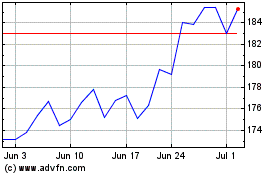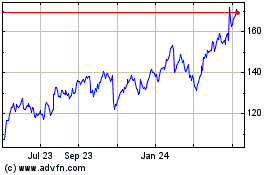By Wilson Rothman
Me: "Alexa, microwave oatmeal."
Alexa: "OK, at what temperature?"
Me: "I don't know."
Alexa: "Hmm, I'm not sure."
I'm trying out a new Amazon-branded oven that's designed to be
easy to operate with simple Alexa voice commands.
While in many ways it is easy, and it can do some impressive
things, it exemplifies the problems we encounter when we try to
control too much with our voices. Does anybody know the temperature
at which they microwave oatmeal? Or even that microwaves had
temperature settings?
The oven does a lot -- it is also a convection oven and an air
fryer -- but when I said "cook salmon," Alexa asked how much. I
said a pound and was informed I can only cook "0.063 to 0.37 pound
of salmon." And while I can easily turn ON the convection oven with
my voice, I can't turn OFF the convection oven with my voice. (The
oven itself doesn't talk; you command it using a nearby
Alexa-powered speaker.)
Amazon says that many of the issues I encountered are being
fixed in background updates, but it'll be a long time before
conversations with voice assistants are wrinkle-free. It's almost
like practicing a foreign language before a trip: You memorize
certain phrases, but when you've used them up, you raise your voice
and start gesticulating wildly.
I've replaced many light switches with Wi-Fi-powered ones; other
lamps have connected bulbs. I have a talking speaker in many rooms,
including bathrooms, and yes, the Christmas tree lights are
connected to a smart plug. My family members all yell out commands
to Alexa, and for the most part she obeys. But we keep it
straightforward: Play this song, turn off these lights, set some
timer or alarm.
The same can be said for how we interact with Siri on our Apple
devices, or with the Google Assistant on the Nest Hub Max in our
kitchen.
"Voice is at its best when you are able to do something quickly,
in the flow of whatever you are doing," Ahmed Bouzid, chief
executive of the voice-first software developer Witlingo and a
former Alexa product head at Amazon, said in an email. The best
interfaces should require less effort than the commands they are
replacing.
In the case of Amazon's smart oven, Mr. Bouzid says he's
skeptical: If you're cooking, you're near your oven anyway and you
generally don't try to do other things while cooking -- so you
might as well push the button.
The counterargument, from Daniel Rausch, Amazon's vice president
of smart home, is that the oven has so many capabilities, no other
interface can hold them: "If you tried to draw a chart of all the
capabilities of those devices and wanted to put each on a button,
you'd need a roadside billboard-size panel for buttons," he
said.
So is that what voice assistants are meant to do, replace
switches and search boxes? The companies behind these interfaces
are constantly adding features to their assistants, some
surprisingly revolutionary. There is a lot you can do now if you
work at it. But due to a combination of factors, including privacy
considerations, it still feels like we're in a rut.
Talking Back
Routines are a way to combine various actions into one string,
so that a simple voice command like "I'm home" shuts off alarms,
turns on lights, adjusts thermostats and maybe kicks on some smooth
jazz.
In theory, this is cool; in practice, it's annoying -- because
to set it up you have to sit there and think about all of the
things you want to happen at once, and how to make it all
happen.
Now, apps that control these interfaces provide suggestions --
often based on your own actions.
Apple's version of this comes when you download an app called
Shortcuts. It isn't the easiest app to use, but if you open it and
tap Gallery, then look at Shortcuts from Your Apps, you might find
something useful. At night, I normally set three alarms -- "Wake
Up," "School Bus Pickup" and "Train." Now, I can just say "Morning
Alarms," and they are set for me.
But routines only solve the problem of too many buttons to push.
Developers are also making these interfaces more conversational,
allowing for follow-up questions. Maybe you say, "Turn on the porch
lights," and that happens, then your assistant might suggest, "Do
you want to turn on the patio lights, too?" Because that would make
sense.
While both Amazon and Google do suggest actions, Amazon's
"hunches" take it further: When you ask for the porch lights, it
might say, "Do you also want me to play smooth jazz?" The question
would be based around your (possibly unconscious) behavior: Often,
when you turn on porch lights, you also fire up the smooth
jazz.
Both Amazon and Google also allow you to momentarily do without
a wake word. By enabling Follow-Up in the Alexa app and Continued
Conversation in the Google Home app, you can wake your assistant,
then keep asking questions without repeating the wake word. It also
retains some of the context: "Alexa, what day is Christmas?" Then,
after it answers, you say, "What about Easter?"
Apple's Siri does this in different contexts. The AirPods Pro
now have an Announce Message feature, which reads messages and
allows you to respond in a conversational way. Walmart's
grocery-delivery app for iOS leverages Siri along with your
shopping history, so you can more easily pick out items with just
your voice, without memorizing key phrases.
Personalization and Privacy
What's really needed is a tighter bond between human and
disembodied voice, analysts that I spoke to said. Personalization
means recognizing who is talking and remembering their preferences.
But that requires data collection, and lately we've grown more
conscious of that.
"Privacy is in the forefront of consumers' minds. Companies like
Apple have done a lot of work on improving it," Simon Forrest,
principal analyst at Futuresource Consulting, Ltd., said. It has
become more possible for devices to hold information on the device
and recognize a particular voice when it requests a particular
movie, for instance.
The Alexa app provides a separate smart-home device history that
you can purge. Google also says it allows you to review and delete
your history.
"We are across the board thinking how we can have as little data
as possible while still improving the product for users," said
Lilian Rincon, senior director of product for Google Assistant. For
now, for quality reasons, most of what Google Assistant does
requires the cloud, she said. However, "we have a desire to put
more things on device."
Google's Pixel 4 phone is a remarkable example of this, as my
colleague Joanna Stern demonstrated earlier this year. It can
transcribe speech to text in real time using nothing but the
silicon inside the phone. The iPhone 11 is also doing more without
the cloud, such as rendering Siri's new voice, and even older
iPhones use on-device processing to monitor your behavior and
suggest actions based on it.
Discover Me
So why, with all this evolution, are we still mostly just
setting timers and asking for tunes? Unlike a new icon in your
favorite app, you can't really see what's new with voice
assistants. The Alexa, Google Home and Siri Shortcuts apps offer
loads of suggestions, as do the screen-equipped speaker devices
that Amazon and Google sell. But it really hasn't been enough to
train people up.
"One of the biggest problems we continue to have is the problem
of discovery, especially for speakers -- letting you know what it
is you can do," Ms. Rincon said.
Amazon's Mr. Rausch also acknowledged the discoverability
problem, using Jeff Bezos' famous phrase: "It's day one at Amazon,
definitely for Alexa and AI."
So what does day two -- or day 12 -- look like? Futuresource's
Mr. Forrest says even a voice-first interface might incorporate
technologies like gesture control and haptic feedback, like the tap
of an Apple Watch on your wrist. He sees "hearables," aka
supersmart AirPods, as a likely voice-first success.
Meanwhile, I'll be trying to talk this smart oven into cooking
more than 0.37 pound of salmon.
--For more WSJ Technology analysis, reviews, advice and
headlines,
sign up for our weekly newsletter
.
Write to Wilson Rothman at Wilson.Rothman@wsj.com
(END) Dow Jones Newswires
December 15, 2019 09:14 ET (14:14 GMT)
Copyright (c) 2019 Dow Jones & Company, Inc.
Alphabet (NASDAQ:GOOGL)
Historical Stock Chart
From Mar 2024 to Apr 2024

Alphabet (NASDAQ:GOOGL)
Historical Stock Chart
From Apr 2023 to Apr 2024
